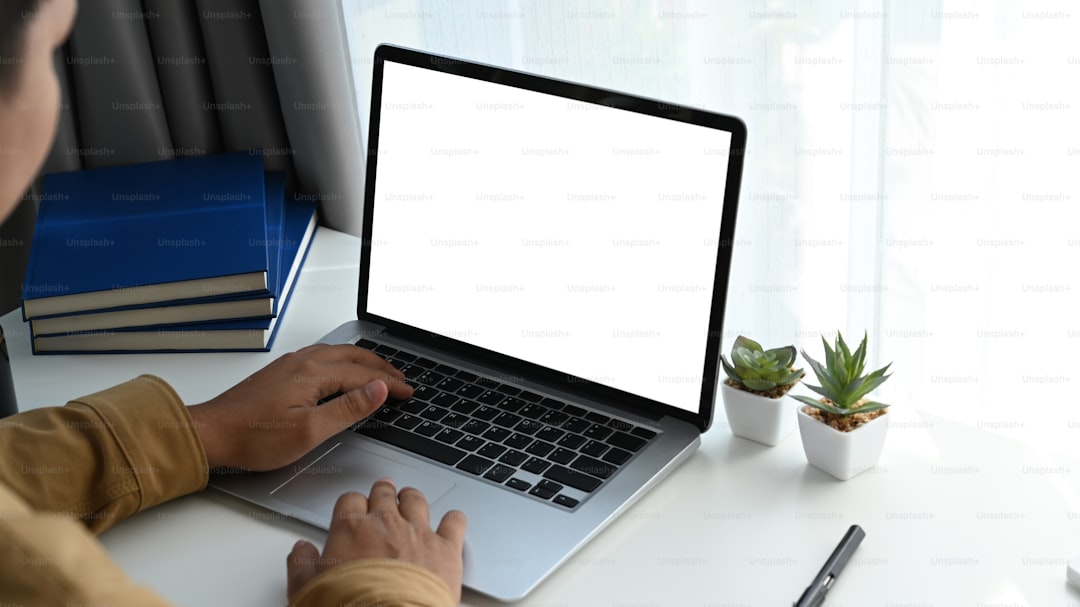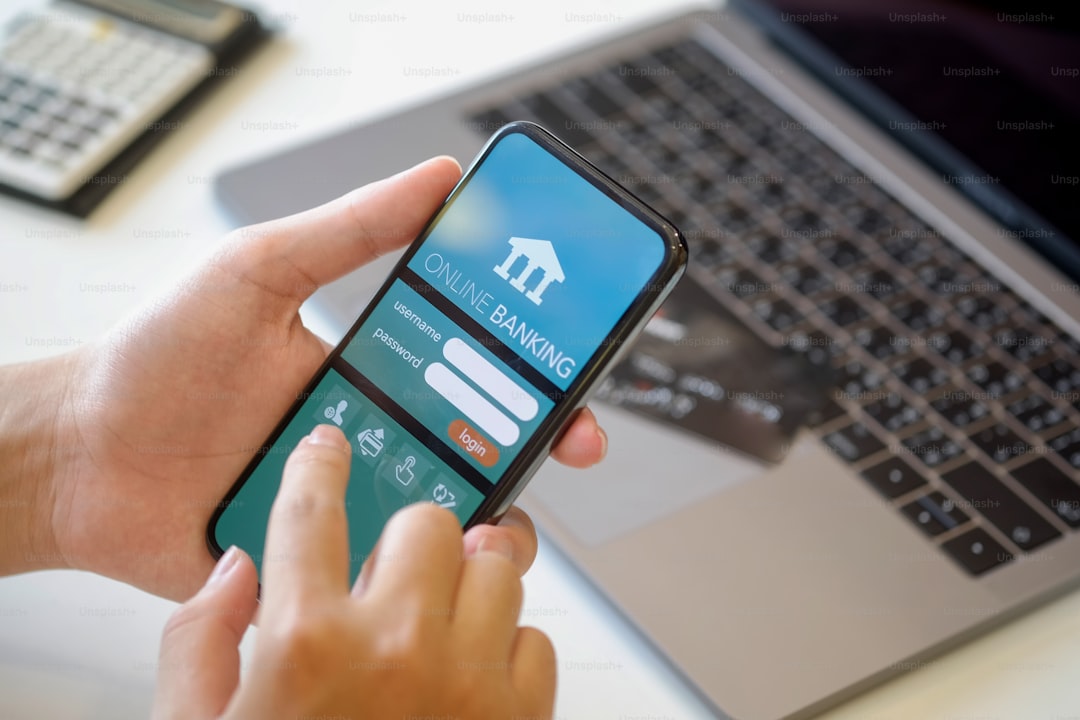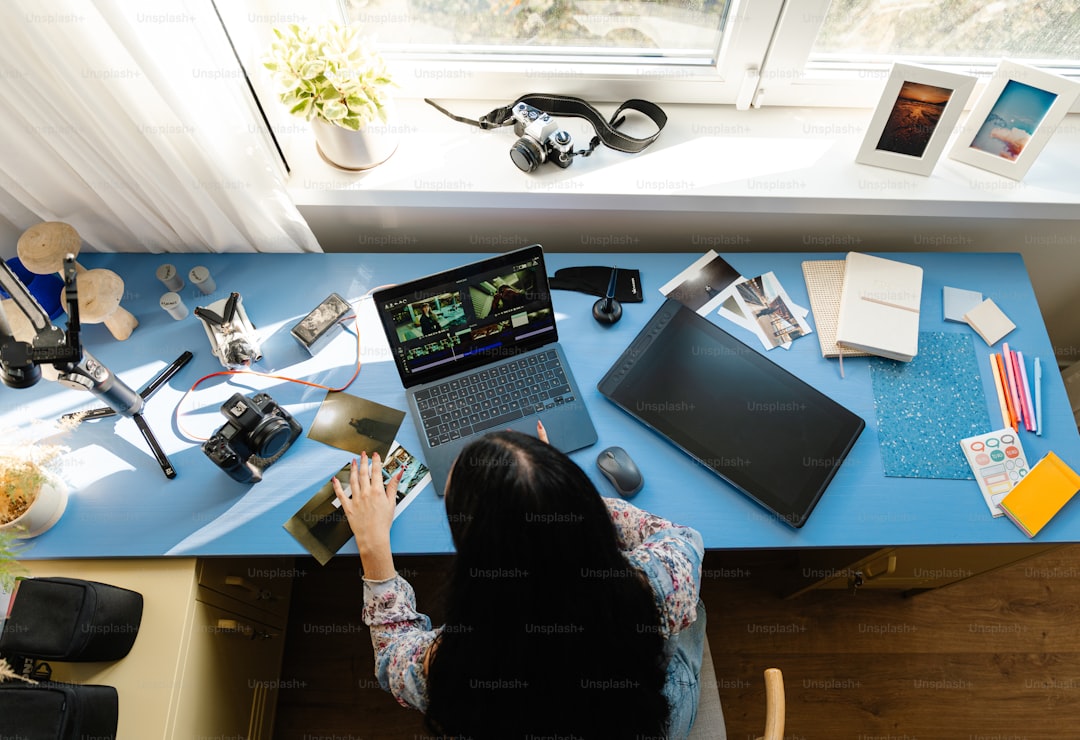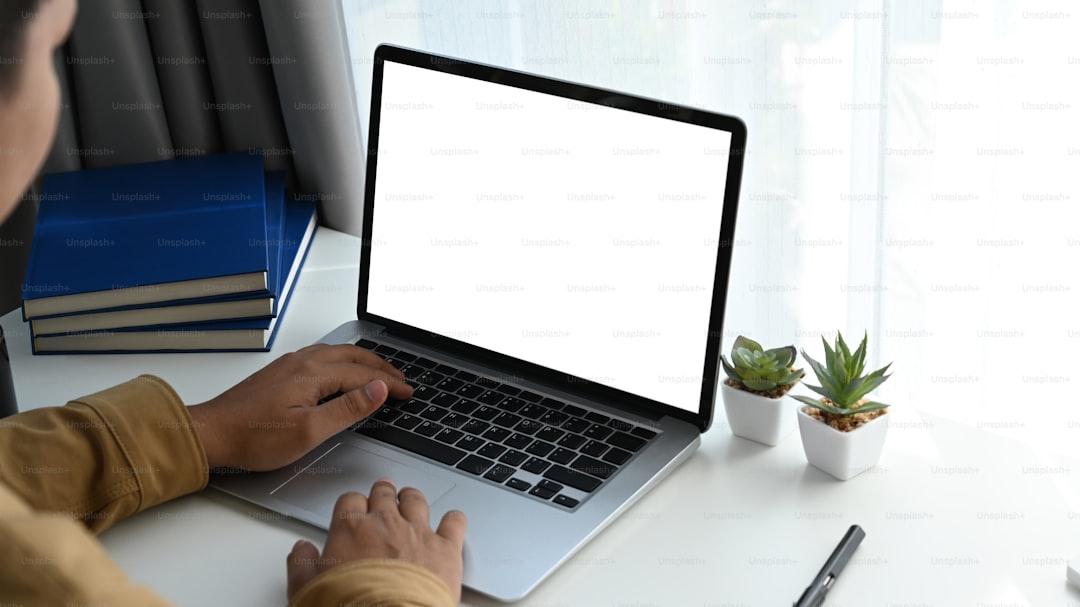Work Anywhere: Turn Your Favorite Cafe Into a High‑Performance Remote Office

Introduction
Remote work has turned the world into a flexible office. No longer are you chained to a single desk or a single city. One of the most enjoyable ways to stay productive is to set up a temporary office in a cafe that you love. A well‑chosen cafe can give you fresh air, background buzz, good coffee and reliable Wi‑Fi – all the ingredients of a high‑performance remote workspace. This guide explains how to turn any favorite cafe into a reliable, efficient office without sacrificing comfort, security or professionalism.
Why Cafes Make Great Workspaces
Natural Change of Scenery
Staring at the same four walls can drain motivation. A cafe offers a change of scenery that stimulates creativity. The presence of other patrons, the aroma of fresh beans and the rhythm of a barista’s routine provide a subtle, low‑level stimulus that keeps the brain alert without becoming a distraction.
Built‑In Amenities
Most cafes already provide what a remote worker needs: tables, chairs, power outlets, Wi‑Fi, and a kitchen that serves snacks and meals. You do not have to invest in furniture or equipment. The cost of a coffee or a pastry often covers the use of the space for a few hours.
Social Energy
Even if you are not looking to network, the ambient chatter creates a sense of community. That social energy can improve mood and reduce the loneliness that sometimes accompanies home‑based work. A brief smile from the barista can be a small but meaningful morale boost.
Cost Efficiency
Renting a coworking desk can be expensive, especially in major cities. A cafe can be a low‑cost alternative. By purchasing a drink or a snack, you support the business and gain a workspace for a fraction of a coworking membership fee.
Choosing the Right Cafe
Not every cafe is suited for focused work. Use the following criteria to evaluate potential locations.
Wi‑Fi Reliability
Ask staff about the speed and stability of the network. Test it with a speed‑test tool before you settle in. Look for cafes that advertise “business class” or “high‑speed” Wi‑Fi. If the connection is spotty, you will waste time reconnecting or switching to mobile data.
Power Availability
A reliable power outlet is essential for laptops, monitors, phones and other peripherals. Scan the seating area for visible outlets or ask staff whether you can use a specific table that has power. Some cafes provide power strips for customers; if not, bring a short extension cord.
Seating Comfort
Ergonomic chairs and tables at a comfortable height can prevent back pain and fatigue. Look for a space that allows you to adjust your posture – for example, a table with a small lip that lets you bring a laptop close without straining your wrists.
Noise Level
Background noise varies throughout the day. Early mornings may be quiet, while lunchtime can be bustling. Choose a time when the ambient noise matches your preferred concentration level. If you need silence, look for a cafe with private booths or a “quiet zone”.
Lighting
Natural light is best for eye health, but glare on a screen can be a problem. A cafe with large windows that allow diffused light is ideal. If the lighting is harsh, bring a small clip‑on lamp or adjust your screen brightness.
Policies on Laptop Use
Some cafes restrict laptop usage during peak hours. Verify that the establishment welcomes remote workers and that you can stay for a few hours without feeling unwelcome.
Setting Up Your Space
Once you have selected a cafe, follow these steps to create a functional workstation.
Claim a Table Strategically
- Choose a table near an outlet but not directly in the high‑traffic path of servers.
- If possible, sit with your back to the entrance; this reduces visual distractions from people entering and leaving.
- Position your laptop so the screen is at eye level; use a laptop stand or a stack of books if needed.
Organize Your Essentials
Lay out your items in a way that minimizes clutter:
- Place your notebook, pen and phone on the right side of the laptop for easy access.
- Keep your charger and any adapters within reach of the outlet.
- Store snacks or a water bottle on the left side to avoid bumping into the coffee machine.
Create a “Do Not Disturb” Signal
A simple visual cue, such as a small “busy” sign or a closed notebook, can let the barista know you are in a focused work session. Most staff appreciate the signal and will avoid interrupting unless you need something.
Tech Essentials for a High‑Performance Cafe Office
Laptop and Peripherals
A lightweight laptop with a good battery life is the core of a mobile office. Pair it with a USB‑C hub, an external mouse, and a compact keyboard if you prefer a more ergonomic setup. A portable monitor can double your screen real estate, but be mindful of the extra space it requires.
Mobile Hotspot Backup
Even the best cafe Wi‑Fi can drop. Keep a mobile hotspot ready as a fallback. Test the data plan’s speed and latency before relying on it for video calls. If you have a 5 GHz plan, you can achieve speeds comparable to most broadband connections.
Noise‑Cancelling Headphones
Background chatter can become a distraction. Noise‑cancelling headphones help you stay focused and also provide a professional audio environment for virtual meetings. Choose a model with a built‑in microphone for clear voice transmission.
Cloud Storage and Synchronization
Store all work files in a cloud service such as Google Drive, Dropbox or OneDrive. This ensures you can access documents from any device and protects against data loss if your laptop is stolen or damaged.
Password Manager
A password manager like LastPass or 1Password keeps your credentials secure and reduces the time spent typing passwords on a public keyboard. Enable biometric login on your phone or laptop for quick, secure access.
Power Management
Running a laptop, external monitor and peripherals can drain the battery quickly. Follow these tips to stay powered throughout your cafe session.
- Set your laptop to “power saver” mode while you are not in a video call.
- Dim the screen brightness to a comfortable level that reduces power consumption.
- Close unnecessary background applications that may use CPU and battery.
- Carry a high‑capacity power bank that supports laptop charging via USB‑C if you anticipate long sessions.
Connectivity: Getting the Best Wi‑Fi Experience
Positioning for Signal Strength
Wi‑Fi routers are often located behind the counter or in the kitchen. Sit close to the router’s line of sight; avoid large metal objects or thick walls that can block the signal.
Managing Network Traffic
If the cafe Wi‑Fi is shared with many patrons, bandwidth can become limited. Use a browser extension or VPN that compresses traffic, especially for streaming or large file uploads. Schedule bandwidth‑heavy tasks for off‑peak hours.
Securing the Connection
Public Wi‑Fi is a common target for attackers. Always use a reputable VPN when accessing sensitive data. Verify the network name with staff to avoid connecting to rogue access points.
Managing Distractions
Even with a well‑chosen cafe, distractions will arise. Here are practical strategies to maintain focus.
Time‑Blocking
Divide your workday into blocks dedicated to specific tasks. Use a timer (Pomodoro technique) to work for 25 minutes and then take a 5‑minute break. During breaks, stretch, refill your drink or check messages, then return to the task.
Visual Barriers
If you are easily drawn to movement, use a small privacy screen on your laptop. This reduces the temptation to glance at passing customers and keeps your screen content private.
Silent Mode for Notifications
Set your phone to “Do Not Disturb” and mute non‑essential notifications. Allow only calls or messages from key contacts to come through.
Mindful Sipping
Enjoy your coffee, but avoid constantly refilling and taking long breaks. Treat each sip as a brief pause, then refocus on your work.
Boosting Productivity in a Cafe Environment
Leverage Ambient Sound
Some people find low‑level ambient noise helpful. If the cafe’s chatter is too loud, use a white‑noise app or playlist that mimics coffee shop sounds without the unpredictable spikes.
Use the “Coffee Break” as a Reward
Complete a task, then reward yourself with a short walk to the counter for a fresh drink. This creates a positive feedback loop that sustains motivation.
Incorporate Light Movement
Standing up to stretch or walking to the restroom provides a micro‑break that re‑energizes the brain. Use these moments to clear mental clutter before returning to the screen.
Health and Ergonomics
Working for hours at a cafe can strain the body if you neglect ergonomics.
Posture Checks
- Keep your elbows at a 90‑degree angle.
- Align your ears with the top of the screen.
- Use a lumbar roll or a rolled towel to support the lower back if the chair is too soft.
Eye Care
Follow the 20‑20‑20 rule: every 20 minutes look at something 20 feet away for at least 20 seconds. This reduces eye strain from prolonged screen time.
Hydration and Nutrition
Keep a reusable water bottle at your table. Choose light, protein‑rich snacks (nuts, yogurt, fruit) to maintain energy without feeling sluggish.
Security and Privacy
Protecting your data while working in a public setting is essential.
Lock Your Screen
Set an automatic lock timer of 1‑2 minutes on your laptop. Use a strong password or biometric lock to prevent unauthorized access.
Use Encrypted Communication
When conducting video calls, ensure the platform uses end‑to‑end encryption. Avoid sharing sensitive documents over unsecured chat services.
Physical Security
Never leave your laptop unattended. If you must step away, ask a trusted staff member to watch your bag, or bring a small lock that can secure the laptop to the table leg.
Building Relationships with Cafe Staff
A friendly rapport with baristas can enhance your remote office experience.
Respect Their Space
Avoid setting up a permanent workstation that occupies a large table for the entire day. Rotate seats if you are a regular, giving others a chance to sit.
Show Appreciation
A simple thank‑you, a tip, or ordering a pastry for the staff occasionally builds goodwill. Staff who recognize you may offer better seating or a quicker refill during busy periods.
Communicate Your Needs
If you need a quieter corner or a power outlet, politely ask. Most cafes are happy to accommodate regular remote workers who treat their space respectfully.
Balancing Cafe Work with Home and Office
While cafes provide a refreshing change, they should complement—not replace—your primary work environment.
Schedule Variety
Plan a weekly rhythm that includes home, office, and cafe days. This prevents monotony and ensures you have access to all the tools and resources available in each setting.
Sync Calendars
Mark your cafe days on your calendar and share them with teammates. This transparency helps colleagues know when you might be slower to respond due to limited connectivity.
Evaluate Productivity
Track how much you accomplish in each environment. Use a simple spreadsheet to compare output, focus levels and satisfaction. Adjust the mix of locations based on the data.
Real‑World Case Studies
Freelance Designer in Portland
A freelance graphic designer chose a downtown espresso bar with large windows and 60 Mbps Wi‑Fi. By using a portable monitor, a USB‑C hub and noise‑cancelling headphones, she completed client mockups in half the time she spent at home. She reported a 20 % increase in billable hours after adding two cafe days per week.
Software Engineer in Berlin
A remote software engineer preferred a quiet, minimalist cafe that offered power strips at each table. He set up a dual‑monitor configuration using a thin 15‑inch portable display. By employing a VPN and a local password manager, he ensured code repositories remained secure. The change of environment helped him break through a long‑standing bug, attributing the breakthrough to the ambient “white noise” of coffee shop chatter.
Marketing Manager in Tokyo
A marketing manager needed to conduct video interviews with overseas partners. She selected a cafe with private booths and excellent acoustics. Using a USB‑C microphone and a high‑quality webcam, she achieved clear audio and video without background interruptions. The professional setup impressed clients and resulted in three new contracts.
Tools and Apps to Optimize Cafe Work
- Trello or Asana – Visual task boards for organizing daily priorities.
- Focus@Will – Music designed to improve concentration.
- RescueTime – Tracks how you spend time on the computer, highlighting productivity patterns.
- Zapier – Automates repetitive tasks, reducing the need to switch between apps.
- Google Keep – Quick note‑taking for ideas that arise while sipping coffee.
- Pocket – Saves articles for later reading, keeping you from getting sidetracked by endless browsing.
- NordVPN or ExpressVPN – Secure connection to protect data on public Wi‑Fi.
- Zapier – Automates repetitive tasks, reducing the need to switch between apps.
A Practical Checklist for Your Next Cafe Session
- [ ] Confirm Wi‑Fi speed and password with staff.
- [ ] Verify outlet availability at your chosen table.
- [ ] Pack laptop, charger, USB‑C hub, mouse and portable monitor (if used).
- [ ] Bring noise‑cancelling headphones and a microphone.
- [ ] Load a VPN and enable it before connecting to the network.
- [ ] Have a mobile hotspot ready as a backup.
- [ ] Prepare a notebook, pen and any reference documents.
- [ ] Fill a reusable water bottle and pack a healthy snack.
- [ ] Set your phone to “Do Not Disturb” with exceptions for key contacts.
- [ ] Arrange a “busy” sign or visual cue to minimize interruptions.
- [ ] Review your task list and set time‑blocking intervals.
- [ ] Perform a quick posture check before you start working.
- [ ] Schedule a short break every 90 minutes for stretching and a coffee refill.
- [ ] Lock your screen when you step away.
- [ ] Thank the barista when you leave.
Conclusion
Turning a favorite cafe into a high‑performance remote office is both an art and a science. By selecting the right location, preparing the essential tech, managing power and connectivity, and respecting both your own focus and the cafe’s environment, you can create a workspace that fuels creativity, boosts productivity and adds a pleasant social element to your day. The flexibility of working from a cafe complements home and office settings, giving you the freedom to design a work life that is dynamic, enjoyable and effective. Use the strategies, tools and checklist provided in this guide to make every cafe visit a productive, secure and satisfying remote‑work experience.
Random Posts

Ultimate Nomad Handbook for Beginners
Turn wanderlust into reality with a clear step by step roadmap. Learn the nomad mindset, essential tools, and avoid common pitfalls so you can launch and sustain a life of freedom on the move.
1 month ago

Essential Banking Solutions Every Digital Nomad Needs
Discover the must have banking tools for digital nomads: global access, low fees, strong security, tax compliance and crypto options. Learn how to set them up and avoid common pitfalls.
2 days ago

Choosing the Right Health Insurance Plan While Traveling the World
Learn how to pick a health insurance plan that fits your nomadic lifestyle, balancing coverage, cost, flexibility and local rules so you stay protected wherever your adventures take you.
1 month ago

Tax Filing Hacks for Nomads Across Borders
Learn how digital nomads can master tax residency, use treaties, simplify foreign income reporting, and employ banking and crypto tools to stay tax efficient across borders.
1 week ago

Mastering Remote Work and Productivity for Digital Nomad Entrepreneurs
Learn how to turn the freedom of digital nomad life into consistent productivity with proven systems, habits and tools for remote work, finance, and client management so you can thrive anywhere.
1 month ago
Latest Posts

Essential Software Every Remote Professional Should Use
Master remote work with essential tools: instant messaging like Slack, high definition video calls such as Zoom, and asynchronous voice apps. Streamline communication, stay connected and boost productivity.
1 day ago

Mastering Remote Work Productivity for Digital Nomads and Freelancers
Learn proven habits, tools, and tactics that help digital nomads and freelancers stay focused, deliver quality work, and maintain a sustainable lifestyle while traveling the world.
1 day ago

Tech‑Friendly European Towns Perfect for Remote Living
Discover Europe’s best small towns where fast internet, affordable living and vibrant tech communities let you work remotely while soaking up historic charm, lakeside views or mountain air.
1 day ago